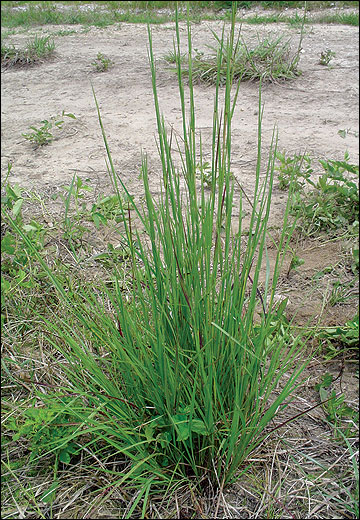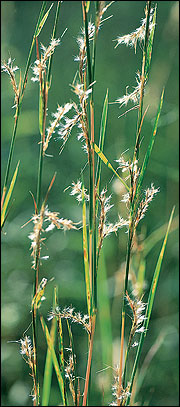Little bluestem
- Schizachyrium scoparium
Grass





A mixture of native warm-season grasses, forbs, shrubs and annual weeds makes this landscape highly attractive to bobwhites. Little bluestem is easy to identify following frost, when it attains a coppery hue. Here it is well-distributed across the landscape.
Robert N. Chapman, Missouri Department of Conservation
 Little bluestem grows in clumps. Stems in summer are bluish green.
Little bluestem grows in clumps. Stems in summer are bluish green.
Scott Sudkamp, Missouri Department of Conservation
Description
Little bluestem is found throughout the Midwest on moderately dry (mesic) to dry soils. This native grass occurs in clumps with fine leaves less than 1/4 inch wide. Seed stalks are commonly 2 to 3 feet tall, but may reach 4 feet on better soils. Stems are hairy and flattened near the base. Seeds are light and fluffy, giving the plant a feathery appearance. Little bluestem has a striking appearance after frost, when it attains a coppery hue. This grass is commonly confused with broomsedge.
Use by bobwhites
Little bluestem is among the best grasses for nesting and roosting habitat. Many nests are made from fine leaves at the base of the clumps. In addition, the bunchy growth habit of the plant provides ample room for many other plants to grow in the same area, creating good brood habitat. This plant provides important habitat that bobwhites will use year-round.

